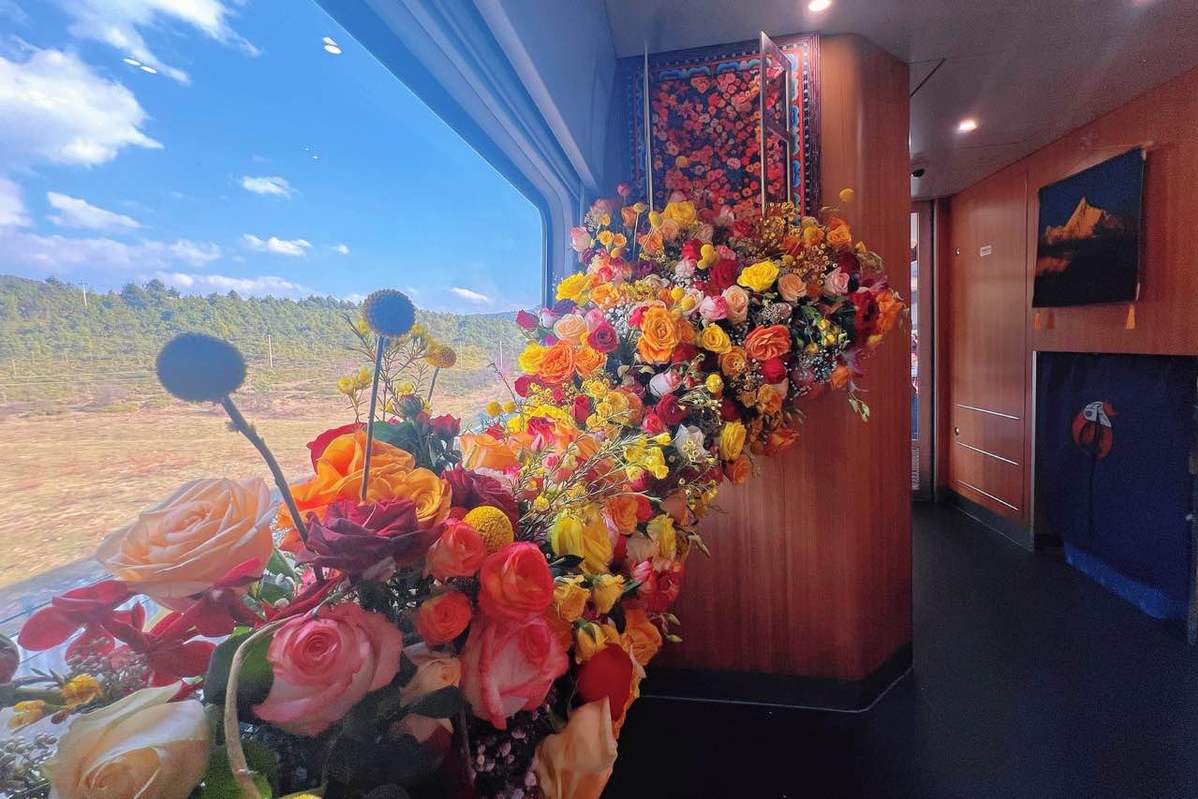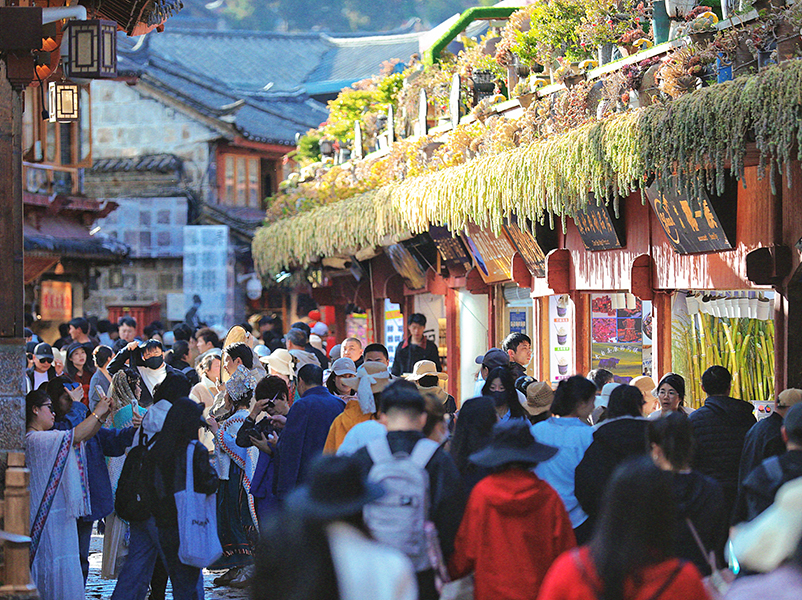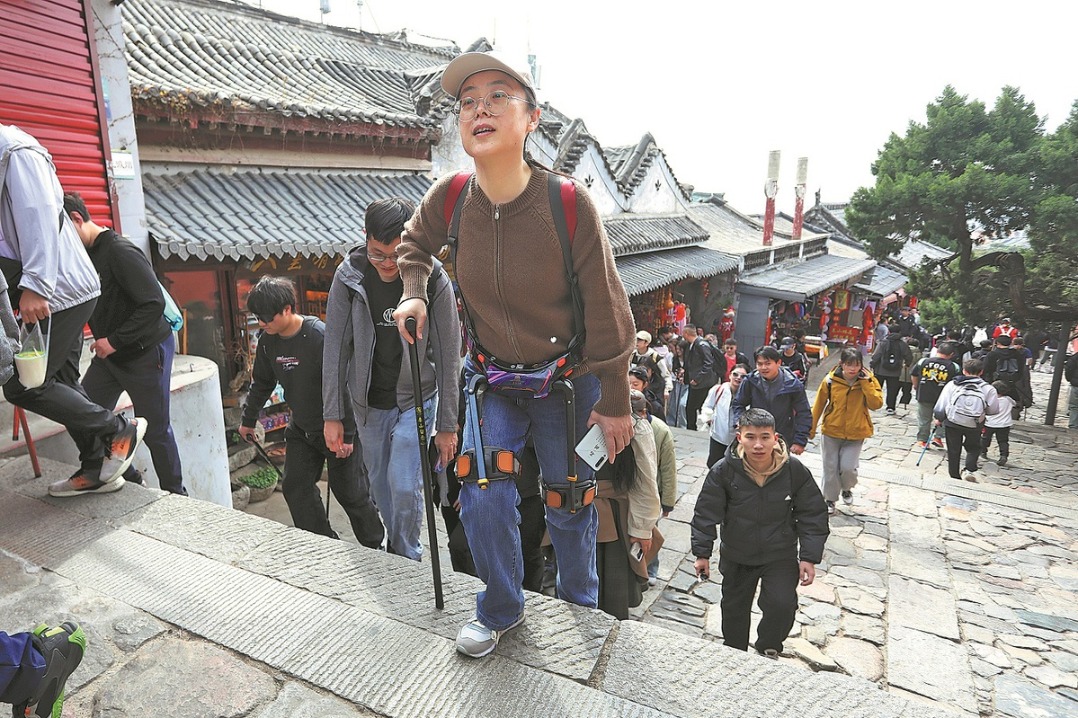Yunnan makes use of railway networks to explore tourism resources
By Liu Xiaozhuo | chinadaily.com.cn | Updated: 2025-04-07 10:41

Southwest China's Yunnan province is making full use of its railway networks to further explore its tourism resources as a flower-viewing-themed train departs from Kunming to Shangri-La.
The Lijiang-Shangri-La railway, which officially began operation on Nov 26, 2023, has reduced the fastest travel time from Kunming to Shangri-La from the previous 10 hours to just 4 hours and 41 minutes. The journey from Lijiang to Shangri-La has been shortened to a minimum of 1 hour and 10 minutes.

The inter-city train C122, adorned with blooming flowers, passes through Dali, Lijiang and finally arrives in Shangri-La. Passengers can not only marvel at the cherry blossoms, peach trees, and rhododendrons along the journey but also immerse themselves in traditional culture by watching ethnic performances in the carriages and savoring authentic Tibetan food.
According to Yang Meixiu, deputy director of Dali's culture and tourism bureau, the development of railway infrastructure has played a significant role in the growth of the city's cultural and tourism industry.
"The steady progressing of railway constructions has significantly reduced travel time, attracting more domestic tourists and cross-border tourists as the railway networks extend to Southeast Asian countries via the China-Laos Railway," Yang said.

Spanish traveler Pauline Hernandez who plans to stay in China for a month has chosen to travel around the country by train. They arrived in Shangri-La from Kunming by train and booked their train tickets for the journey from Guilin to Yangshuo in Guangxi at Shangri-La Railway Station. "The service here is good and the high-speed railway trains in China are organized and convenient," she observed.
Statistics show the number of traveling to Dali by railway continues to increase. With spring coming, the cherry blossoms attract waves of flower-viewing tourists. "In the first quarter of this year, Dali Railway Station dispatched over 2.7 million passengers, a 6 percent increase compared to the same period last year," said Ye Na, the stationmaster.
Zhang Hao, a 25-year-old shop-owner in Dali ancient town, used to worry about not having enough tourists. "Now more and more people are coming for weekend getaways and relaxing vacations. Our Bai ethnic group's tie-dye experience classes can have two or three sessions a day," Zhang said.
Located about 200 km northeast of Dali, Lijiang has integrated railway networks with its rich ethnic heritage and natural charms, drawing a growing number of visitors.

A sightseeing train connecting Lijiang ancient town and Yulong Snow Mountain was launched this February, providing a more convenient and comfortable sightseeing experience.
Passengers can sit inside carriages designed with Naxi ethnic group cultural elements and enjoy the views of Yulong Snow Mountain through the windows.
According to Yang Jian, chairman of the company operating the sightseeing train, the train features electrically adjustable, tinted glass windows. "These windows not only provide a better panoramic view but also effectively shield passengers from high-altitude UV radiation," Yang introduced.
According to data from Lijiang's culture and tourism bureau, the city received over 60 million tourist visits in 2024, with tourism revenue reaching 98 billion yuan.
He Huiqiong, 50, a member of the Naxi ethnic group in Lijiang, is a performer of traditional Naxi dances. She said her family's income has increased with the development of the city's tourism. "As more people visit my hometown, our culture has been seen and appreciated by the world and for ourselves, we can see the world outside and see the hope of the future," she said.
As the final stop of the flower-viewing train route, Shangri-La is located in high-altitude terrain with cold climate. The city strives to welcome tourists with warm hospitality. Shangri-La Railway Station, Yunnan's highest-altitude passenger hub, is equipped with underfloor heating. "Our heating system ensures warmth despite the bitter cold," explained the stationmaster Hu Shuang.
According to statistics, during the first quarter, Shangri-La Railway Station handled over 430,000 passenger trips, marking a 42 percent year-on-year increase. "With flower season coming, more tourists will travel to Shangri-La by train," predicted Hu.
The station has also introduced trilingual assistance (Mandarin, Tibetan, English), ensuring smooth traveling experiences for both Tibetan and international passengers.
























